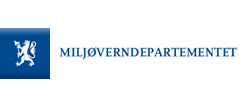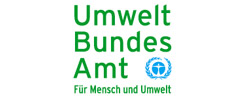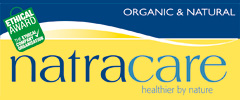PHAST transforms into PHAEST
During three days of trainings and workshops for WECF-ELA partners in South-Kyrgyzstan
24.04.2009 |Fedde Jorritsma
PHAST (Participatory Hygiene And Sanitation Transformation) is a world wide used methodology for hygiene behavioural change. It has originally been developed by WHO and was adapted to fit Central Asian culture. Several member organisations of the WECF network, such as the Central Asian Alliance for Water (CAAW), have used PHAST successfully during more than six years work with communities in rural areas. On the initiative of WECF, these partners have joined to adapt PHAST to be used for promotion of hygiene and ecological sanitation. The adapted Participatory Hygiene and Ecological Sanitation Transformation (PHAEST) will be used to spread knowledge on ecological sanitation, and also in the context of training the
right use of Urine Diverting Dry Toilets and obtained fertilizer.
The adaptation has been achieved during three day trainings and workshops for WECF-ELA partners in Osh (South-Kyrgyzstan). Twenty participants from Tajikistan. Twenty participants from Tajikistan, Kyrgyzstan and Kazakhstan are now able to conduct PHAEST trainings for local facilitators which have a big chance to change the behaviour regarding hygiene and create - at the same time - a demand for ecological sanitation. People learn by doing, playing and discussion. Participants were such enthusiastic that one coffee break could be skipped.
The PHAEST program consisted of the following steps:
1. Participants have to vote anonymous on their last hygienically behaviour (e.g. what they did after their last toilet visit; nothing, washing hands or washing hands with soap). This gave insight and awareness on peoples current behaviour.
2. Participants have to categorize pictures into bad, average or good hygiene behaviour. Here some extra pictures are included to PHAST for the PHAEST: e.g. a men who was urinating in the field. This gave a lot of discussion since urine is sterile but the behaviour is not accepted. Additionally participants were asked to make new pictures for more discussion and insights.
3. A set of toilet pictures are divided among two groups who have to present which toilet is safe and which can cause risks for health and the environment. Of course different variants of UDDTs were included nevertheless participants came up with some other good ideas for new pictures to stimulate the discussion. E.g. a flushing toilet which is safe when connected to sewage system however this is seldom the case in Central Asia. And a Muslim toilet.
4. In the next excersise participants have to indicate how pathogens transfers from toilet to body (flies, hands, field, water).
5. The transfer routes can be blocked by good hygiene behaviour and safe toilets. This was also indicated by pictures.
6. In the gender analysis tool men and women work separately on a day schedule of men and women. They indicate with pictures were hygiene risks occur. This tool appeared to be very interesting with heated discussions between women and men. Finally it gave insight in the different roles of women and men regarding hygiene and sanitation.
7. In Central Asia people are not used to clean their toilet therefore special attention have to given for maintenance and operation. A demonstration UDDT and cleaning materials were installed in the training room. Participants showed how to clean the toilet, what to do if there are some problems with smell etc. where-after the audience gave feedback.
8. The last tool is called “Closing the loop” where all knowledge have to be used to make the cycle of nutrients without risks for health and the environment. Thus from eating to the toilet, in the toilet faeces have to be treated and can be used in agriculture afterwards, we eat the crops from agriculture and the cycle start again. Participants were very creative but showed to be aware of all hygiene risks.
Furthermore participants have been trained in the theoretical background of Ecological Sanitation and hygiene, principles of facilitation, conditions for providing a training for facilitators, setting-up a structure of local facilitators in villages and got the opportunity to facilitate a PHAEST excersice by themselves.
Many good ideas arose during the training for further integration of PHAST and the Ecological Sanitation. Representatives from every country made a plan to implement PHAEST in their countries. I am going to work as well, new pictures and adapted guidelines are needed.
By Fedde Jorritsma, working as field officer in Central Asia for the ELA project.
Related News
Meet the Winners of the Gender Just Climate Solutions Award at COP24
On the 70th anniversary of the Universal Declaration of Human Rights, we awarded Gender Just Climate Solutions Winners at the climate negotiations in Katowice, Poland
11.12.2018
Invitation: Gender Just Climate Solutions Award 2018
10 December, COP24 Katowice
04.12.2018
Getting to the Future We Want
4-7 November, Brussels: European Environmental Bureau’s (EEB) Annual Conference
12.11.2018
GoodFood4All
WECF and partners all over Europe start GoodFood4All Campaign
06.11.2018
#Ruralwomen: join our Women2030 campaign!
15.10.2018








































